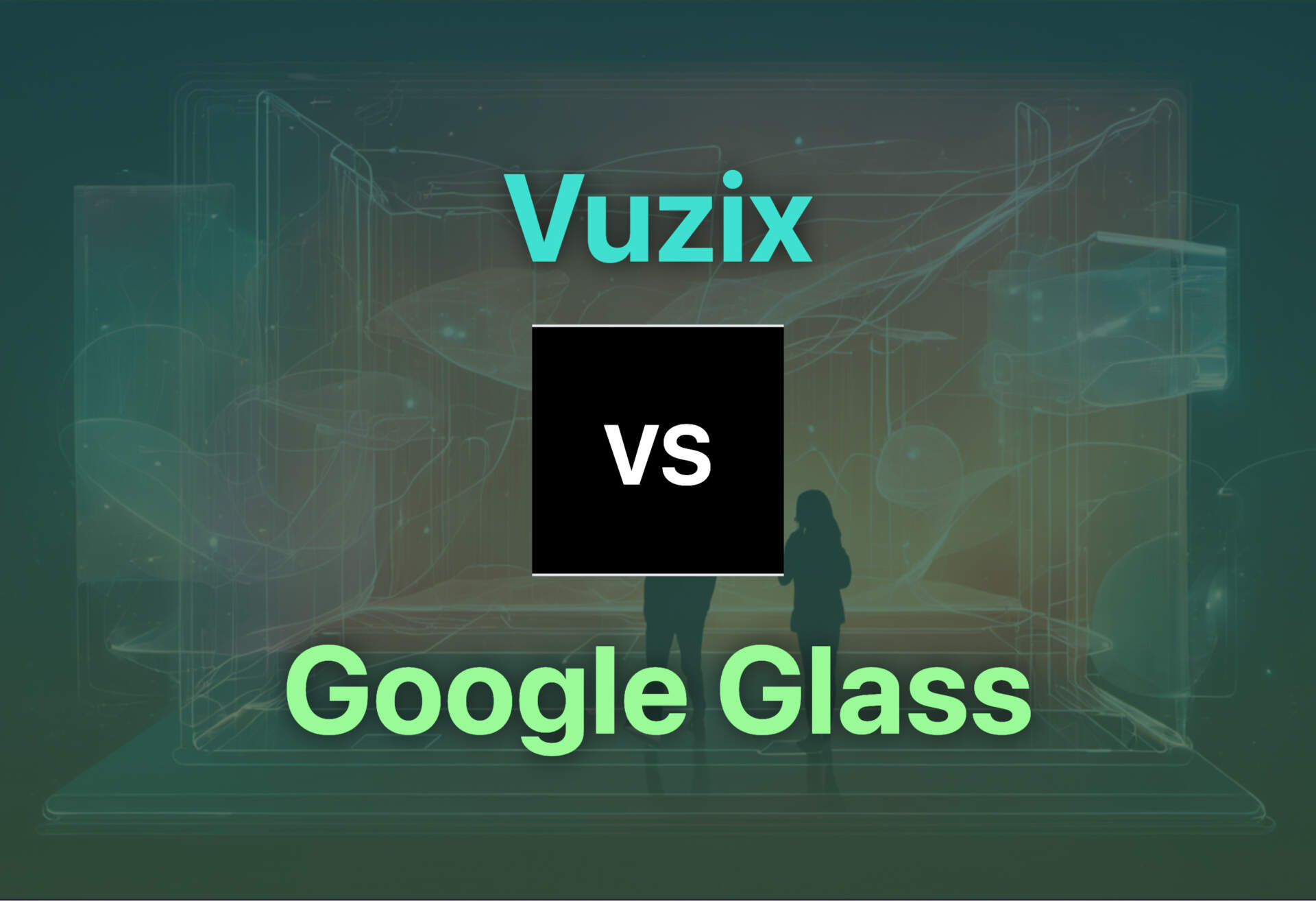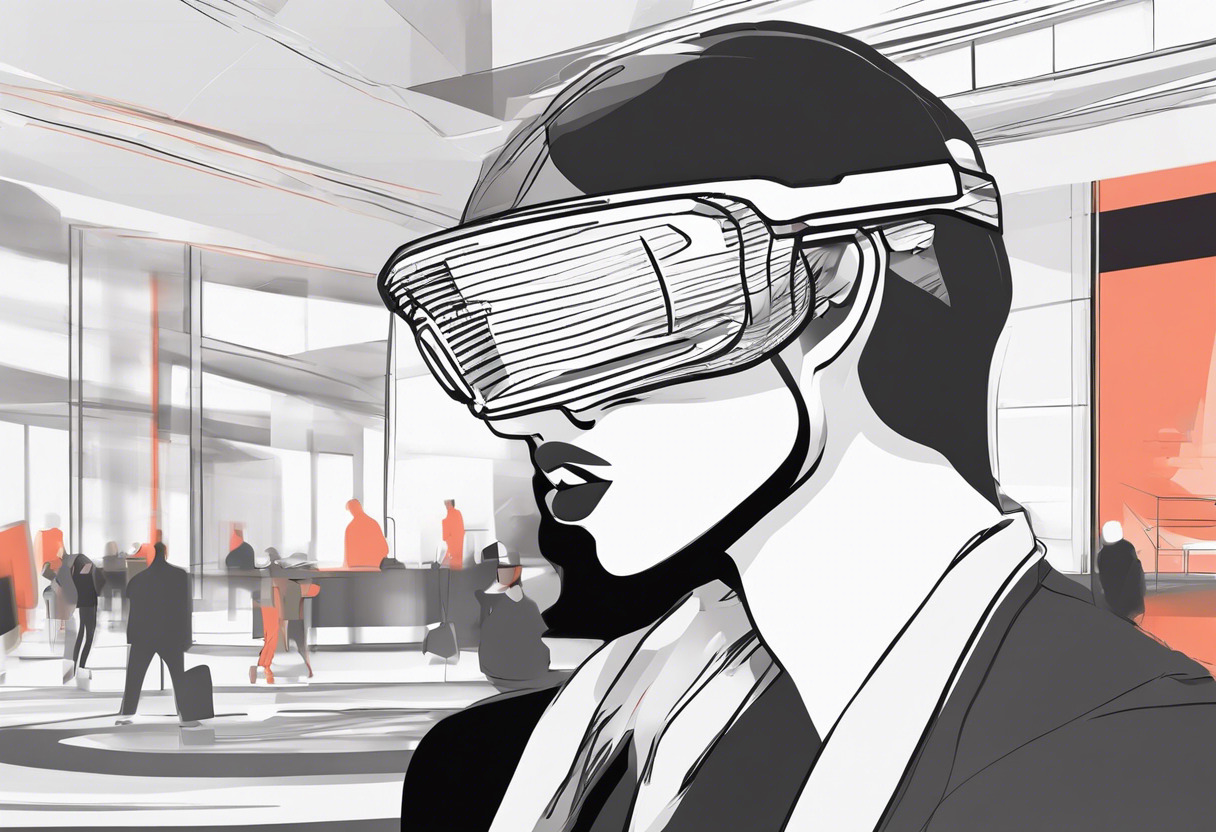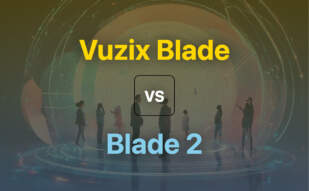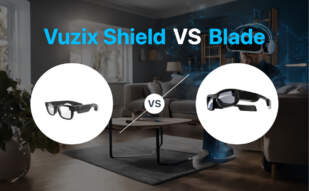Although both Vuzix Blade and Google Glass have unique offerings, Google Glass emerges as a power tool for professional use, particularly with its superior integration features and efficient real-time updates. However, Vuzix Blade, with its greater compatibility features and augmented reality applications, may serve as a better option for developers focusing on consumer markets.

Key Differences Between Vuzix Blade and Google Glass
- Vuzix Blade operates primarily as a phone accessory, whereas Google Glass functions as an independent Android device.
- Vuzix Blade leverages waveguide technology for AR experiences, whereas Google Glass employs a micro-projector FSC LCOS system.
- Google Glass supports comprehensive real-time updates via Google Now, an aspect absent in Vuzix Blade.
- Vuzix Blade features potential for facial recognition and live camera feed augmentation, not currently found in Google Glass.
- Google Glass integrates with Google products including Google Maps and Hangouts, while the Vuzix Blade incorporates Google Assistant and Amazon’s Alexa support.
| Comparison | Vuzix Blade | Google Glass |
|---|---|---|
| Introduction Date | Unveiled in 2018 | Launched in 2013 |
| AR Accessory | Serves as phone accessory | Standalone AR Device |
| Operating System | Android 11 OS | Android based OS |
| Features | Possible future facial recognition and camera feed augmentation | Semi-transparent screen, photo/video capturing, Google Hangout, Google search access and navigation |
| Usage | Designed for deskless workforce and consumer markets | Factories, warehouses, hospitals |
| Safety and Efficiency | Frontline workers with hands-free access to data | Time, money saving and increased safety in work settings |
| Integration | Integration with common MDM solutions | Third-party app integration and Google services |
| Company Founding Year | Founded in 1997 | Google Founded in 1998 |
What Is Vuzix and Who’s It For?
Vuzix, an augmented reality firm based in Rochester, NY, plays a pioneering role in crafting smart glasses leveraging advanced waveguide technology. Pioneered by Paul Travers in 1997, the company’s repertoire spans VR and AR solutions like the Blade AR glasses, which debuted at the 2018 CES event, and new Ultralite smart glasses. Vuzix devices are aimed at the ‘deskless workforce,’ serving as crucial tools that connect frontline workers with AR systems for hands-free access to data and remote expertise. They are also designed for general consumers keen on integrating advanced technology in their day-to-day life.

Pros of Vuzix
- Enhanced user experience with Android 11 OS and common MDM solutions integration in Blade 2
- Provides hands-free access to data and remote expertise
- $999.99 pricing includes Google Assistant, Amazon Alexa support
- Lightweight (38 grams) Ultralite smart glasses offer a run-time of two days
Cons of Vuzix
- Unlike complete AR devices, Blade serves mainly as a phone accessory
- Only projects a smaller, semi-transparent rectangular screen, limiting the AR experience
- Future features like facial recognition, live camera feed augmentation yet to be implemented
What Is Google Glass and Who’s It For?
Google Glass is a novel, wearable Android device that places information at the tip of your sight via augmented reality. First launched in 2013 and reintroduced in 2019 as Glass Enterprise Edition 2, Google Glass has been refined for professional use in factories, warehouses, and hospitals. It’s an innovative solution for enterprises aiming for time and money savings, increased safety, and real-time updates via Google Now. Regular consumers desiring a futuristic and hands-free way to access information may also explore Google Glass’s offerings.

Pros of Google Glass
- Provides a comprehensive augmented reality experience with visual, audio, and location-based inputs
- Can be controlled through voice and motion
- Supports third-party apps including New York Times, Evernote, Path, Skitch
- Integrates seamlessly with Google services from search engine access to Maps and Hangouts
Cons of Google Glass
- Initial privacy concerns when first launched
- Pricier than the average smartphone or tablet
- Realistically, designed more for professional use than consumer use
- Current devices may not work with prescription eyewear frames
Determining the Champion: Vuzix vs Google Glass
As the dust of comparison settles, let’s dissect which AR marvel takes the cake from the standpoint of varied user clusters.
The Deskless Workforce
For hands-on employees, Vuzix overshadows Google Glass. Embedded with waveguide technology, Blade 2’s Android 11 OS, seamless MDM integration, teleconferencing facilities, and optimal memory management, ensure smooth and hands-off access to real-time data and remote expertise.
- Lightweight and power-efficient
- Two-days battery life
- Easy-to-read screen for translations, messaging, directions

AR/VR Developers & Enthusiasts
For this tribe, Google Glass steals a march. Its AR implementation with visual, auditory, and location-based inputs delivers a unique immersive experience.
- Interactive interfaces via voice/motion control
- Google search, photo/video capture, sharing using Google Hangouts
- Real-time updates via Google Now

Heavy Industries
Companies in warehouses, factories or hospitals, find their gem in Google Glass Enterprise Edition 2. Potential time, money savings and enhanced safety makes this edition a clear choice for industrial regimes.
- Step-by-step Google Maps guides
- Voice/video calls
- Email/text responses via voice dictation

In a nutshell, for the deskless army, Vuzix serves as a coherent gadget, while for the AR/VR devotees & industrial circles, Google Glass flaunts flexible superiority. Safety and potential savings make it the favored pick for enterprises.
Patrick Daugherty
Content writer @ Aircada. Merging AR expertise with a love for late-night gaming sessions.





